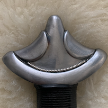-
Posts
266 -
Joined
-
Last visited
-
Days Won
1

xiayang replied to Swords's topic in Translation Assistance



xiayang replied to Bruce Pennington's topic in Translation Assistance

xiayang replied to Tohagi's topic in Translation Assistance

xiayang replied to Isley's topic in Translation Assistance

xiayang replied to Fusilier's topic in Translation Assistance

xiayang replied to Tohagi's topic in Translation Assistance

xiayang replied to chinaski's topic in Translation Assistance

xiayang replied to Zoglet's topic in Translation Assistance

